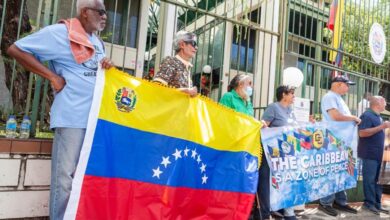Colombian flowers flood the United States
For Valentine's Day, USA imports 75% of flowers from Colombia

For the celebration of Valentine's Day, many people look for gifts for their partners and friends. One of the most common gifts in this holiday is flowers. In fact, it is almost impossible to imagine a Valentine's Day without flowers, so that day there are plenty of bouquets as well as flower arrangements in the offices and on the streets.
In Colombia, for flower growers in the country, February 14 is more than Valentine's Day and it transcends the holiday that lasts only one day. Flower producers work hard for months for one of the most important dates in the calendar of the export sector.
According to data extracted from Trade Map, an application of the Foreign Trade Center based on figures from DANE (National Administrative Department of Statistics), between 2016 and until November 2017, exports of roses from Colombian soil represented a little more than 1% of total exports. In fact, for some months they reached approximate values of 3%.
If we translate these numbers IGNORE INTO income, in the aforementioned period, they represented around 708 million dollars for the Colombian treasury. In the month of September, the figure reached nothing more and nothing less than 91.4 million dollars.
Given the import of this sector for the Colombian economy, the Colombian Foreign Trade Minister, Olga Lucía Lozano, highlighted that 74% of the flowers that the United States buys for the celebration of Valentine's Day are of Colombian origin.
During the years 2016 and 2017, the main buyer of roses cultivated in Colombian lands has been the USA that agglomerates 74%. The North American country is followed by Russia with 4%, Spain, Canada, and the Netherlands with 3% each, Japan and the United Kingdom with 2% each, and finally Brazil, Australia, and Panama with 1% each.
Currently, Colombian flowers enter without paying tariffs to the United States, Canada, the European Union, Chile, Cuba, Mexico, Argentina, Brazil, Paraguay, Uruguay, Venezuela, Bolivia, Chile, Ecuador, and Peru. While other countries such as Panama, Costa Rica, Guatemala, Honduras, and El Salvador have trade agreements that give them a preferential tariff.
Colombian flowers compete globally with those from Holland, Ecuador, and Kenya. In 2014, the main exporter of fresh flowers in the world was Holland with 48.1% of total exports, followed by Colombia with 14.1%, Ecuador with 8.2% and Kenya with 7.2%. According to Asocolflores, the main association that brings together 220 companies in the sector and represent 65% of sales abroad, Colombia today supplies the world market for flowers by 18%.
Asocolflores also ensures that floriculture employed 130,000 people in 2015, 65% were women and 35% were men, according to the latest data from the Federation of Merchants (Fenalco, in Spanish). Single mothers represent the majority of the workforce in the sector. Asocolflores declared that they concentrate 25% of the formal feminine employment in Colombia.
Latin American Post | Daniel Ramírez Pérez
Translated from “Flores colombianas inundan EE.UU.”





